#Bodhisattva
Photo




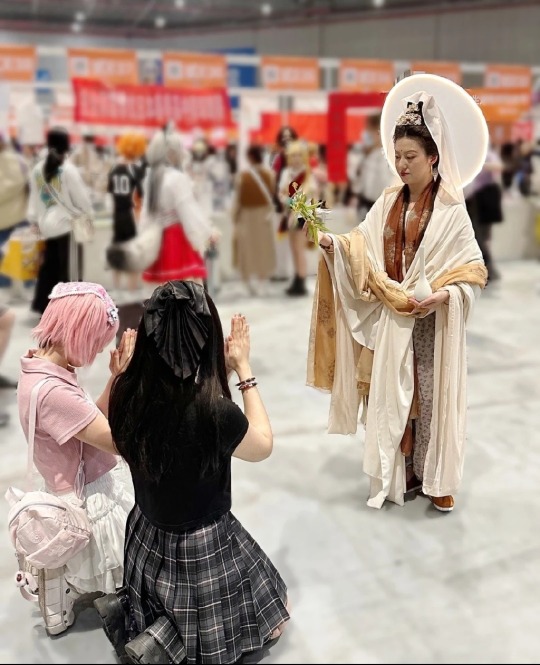


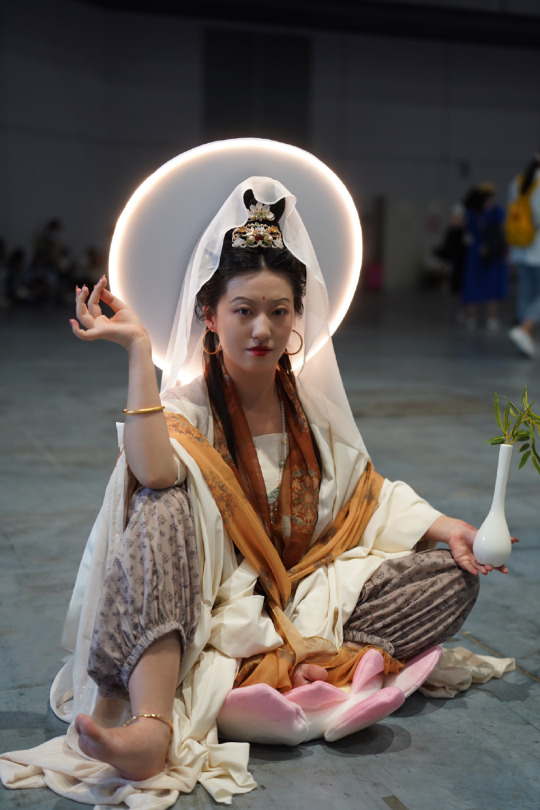
guanyin cosplay in shanghai comicup29
#china#fashion#cosplay#chinese fashion#fun#cnetizen comments 物理超度#guanyin avalokiteshvara#bodhisattva
2K notes
·
View notes
Text
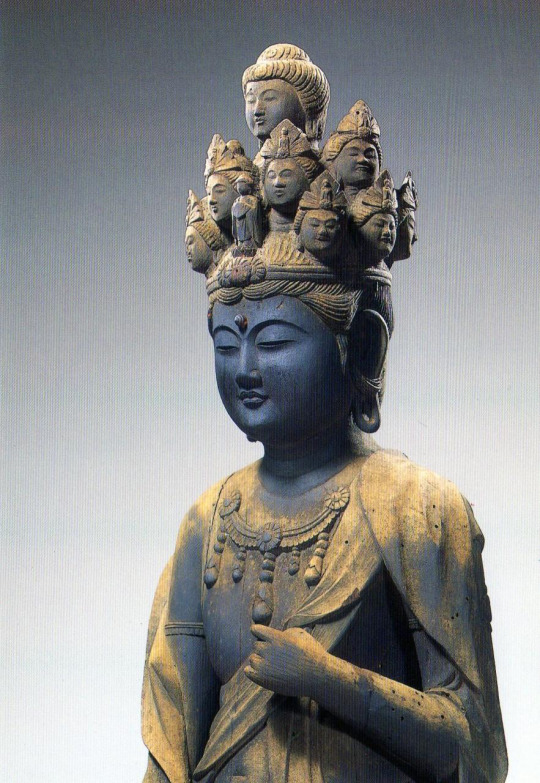
Ekadasamukha the bodhisattva of compassion
708 notes
·
View notes
Text

"Bodhisattva (The River)" 9"x12" collage, acrylic, wax pastel, paint pen on paper. Available here.
#river#water#the river why#bodhisattva#buddhism#zen#art#traditional art#coyote#animal art#mixed media#primitive wiggles#anthropomorphic#collage
183 notes
·
View notes
Text
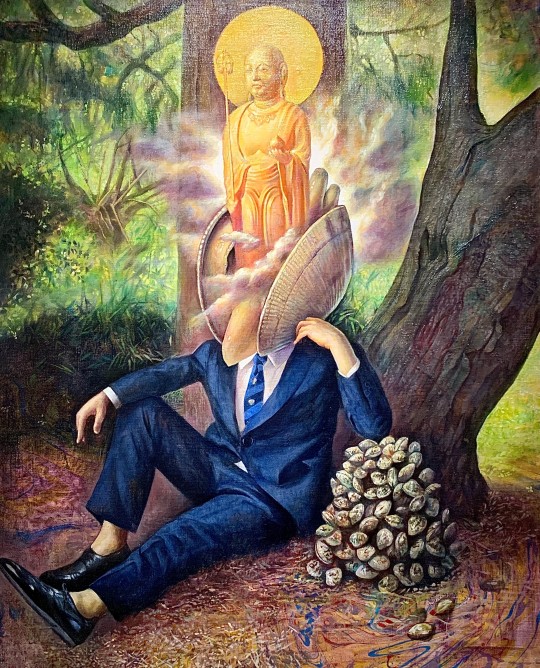
Tomoaki Ichikawa — The Bodhisattva Clam Head (oil, canvas, 2016)
270 notes
·
View notes
Text
I’ve been stricken with numerous personal life circumstances that have made it difficult to produce solid research pieces as well as answer questions, but I still want to share information.
This type of dance is called Dunhuang and mixes traditional ethnic dancing styles with modern art. The style of the dance itself is influenced heavily by Buddhism. Specific body movements are inspired by fresco paintings found inside the caves of the west China province of Gansu. The dance style owes it’s name to the musical scores found within the city of Dunhuang.
Dunhuang itself used to be a massive center for Buddhist teaching and practices between 500AD-1000AD, being home to several monasteries during that time period. Pilgrims from China, India and Tibet would congregate here leaving behind massive amounts of Buddhist written text and art that would form the strongest body of primary works regarding Buddhist communities in China.
This group here is performing The Thousand Handed Guanyin, and actually happen to be hearing impaired! It’s actually quite mesmerizing to watch.
189 notes
·
View notes
Photo

Bodhisattva Guanyin ca. 1125, Song dynasty, China. Polychromed wood. The Sam and Myrna Myers Collection. Photo by Thierry Ollivier. (via The Kimbell Art Museum)
552 notes
·
View notes
Text
Self-work will sometimes feel like you are going out of your way and dealing with your own shit just so you can treat others better than they treat you.
Do it anyway.
You won’t regret healing from traumas.
You will regret spreading your trauma.
153 notes
·
View notes
Text






Point Break (1991)
#point break#kathryn bigelow#patrick swayze#keanu reeves#james le gros#movies#film#quotes#bodhisattva#1991
605 notes
·
View notes
Text

A wood figure of Bodhisattva Jizō, 14th century, Japan.
source: japaneseaesthetics
82 notes
·
View notes
Text

Samundra Man Singh Shrestha (born in Nepal, 1980), Green Tara
Museum of Nepali Art (MONA)
#samundra man singh shrestha#nepalese artist#contemporary artist#green tara#bodhisattva#buddhist art
183 notes
·
View notes
Text

Adoration of the Buddha.
©Robin Fifield 2023.
#robin fifield photography#photographers on tumblr#awehaven#original phography#cats of tumblr#robin fifield cats#catslover#my cats#cute cats#leafy the cat#monty the cat#buddha#bodhisattva
127 notes
·
View notes
Text
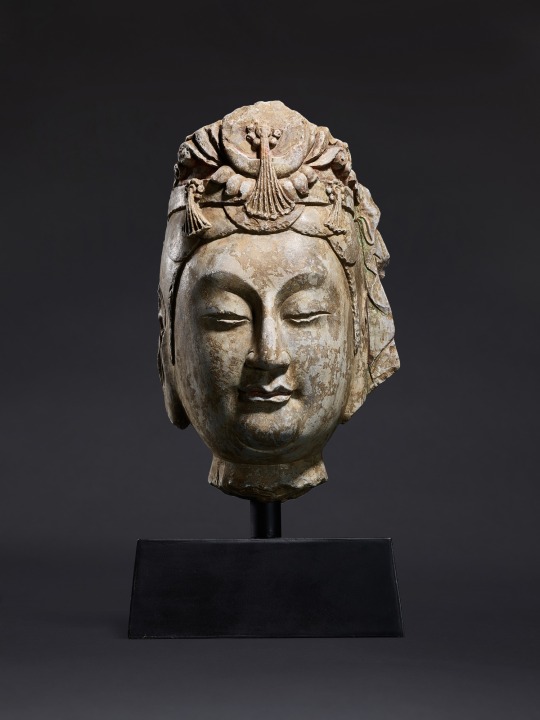
A carved limestone head of a Bodhisattva, Sui dynasty,
Height 43 cm, 16 7/8 in.
Courtesy: Sotheby's
#art#history#style#archeology#sculpture#figure#china#limestone#bodhisattva#sui dynasty#sotheby's#carved#design#imperial
69 notes
·
View notes
Text
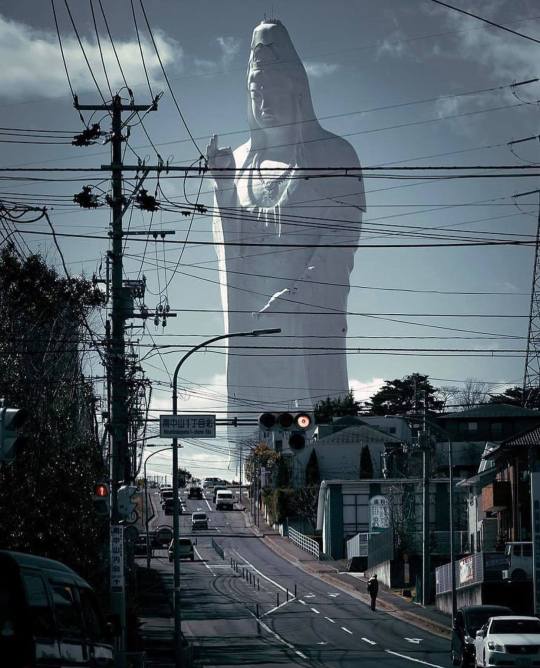
Sendai Tendou Byakue Daikannon (仙台天道白衣大観音), located in Sendai, Japan. It portrays the bodhisattva Byakue Kannon (白衣観音, "White-robed Kannon", a.k.a. The Goddess of Mercy) bearing the cintamani gem (如意宝珠, Nyoihōju) in her hand.
It is the tallest statue of a goddess in Japan and as of 2023 is the 8th tallest statue in the world at 100 metres (330 ft).
60 notes
·
View notes
Text
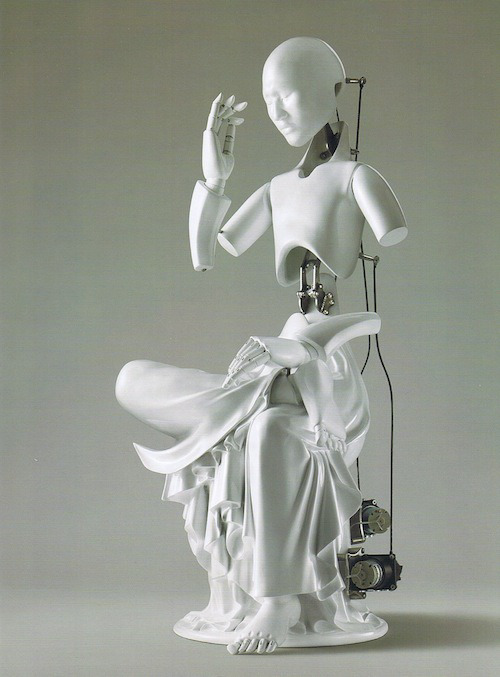
Zi Won Wang: Pensive Mechanical Bodhisattva (2010)
305 notes
·
View notes
Text

Stoicism and Buddhism: A Comparative Analysis
Attraction to those close to you catches you in its currents; Aversion to those who oppose you burns inside; Indifference that ignores what needs to be done is a black hole. Leave your homeland — this is the practice of a Bodhisattva.
Cato hated excess. He hated finery. He hated luxury. He thought to indulge such things was weakness and stupidity. And so what did Cato think of his brother who was far less strict about these things? He loved him. In fact, he worshiped him.
It’s important to remember: The Stoic has strict standards. We have strong opinions on what’s right and what isn’t. But…and this is a big but…we have to be understanding and forgiving of those who have been, as Marcus Aurelius writes, cut off from truth.
Stoicism and Buddhism are two ancient philosophical nd spiritual traditions that have captivated the minds of countless individuals over centuries. While they have distinct cultural origins and historical backgrounds, a closer examination reveals intriguing similarities and differences in their core principles and approaches to life. In this essay, we will explore these two philosophies and shed light on their fundamental ideas, ultimately highlighting the common ground and disparities that define them.
**Stoicism:**
Stoicism, originating in ancient Greece, is a philosophy founded by Zeno of Citium around 300 BCE. It places a significant emphasis on rationality and virtue as the means to attain a tranquil and content life. Several fundamental tenets characterize Stoicism:
1. **Virtue as the Highest Good:** Stoics believe that the highest good is living in accordance with virtue. The four cardinal virtues of wisdom, courage, justice, and temperance are essential in guiding human actions.
2. **Acceptance of What Is Beyond Control:** A core Stoic teaching is the acceptance of things that are beyond one's control. Stoics argue that inner peace is achieved by recognizing and accepting that external events are beyond one's power, while one can control their own thoughts and actions.
3. **Emotional Resilience:** Stoics advocate for emotional resilience through reason and self-discipline. They view destructive emotions, such as anger and fear, as hindrances to a tranquil life and emphasize the importance of maintaining emotional equilibrium.
4. **Detachment from Material Possessions:** Stoicism encourages individuals to detach themselves from material possessions and not be attached to external outcomes or circumstances.
5. **Compassion and Justice:** While Stoics maintain strict standards and opinions about what is right, they also promote the development of a rational and compassionate attitude towards others, placing a strong emphasis on justice and fairness.
**Buddhism:**
Buddhism, founded by Siddhartha Gautama, the Buddha, in ancient India, is both a spiritual and moral philosophy that aims to address the problem of suffering and guide individuals toward enlightenment and liberation from suffering. Buddhism's key principles include:
1. **The Four Noble Truths:** Central to Buddhism is the recognition of suffering as an inherent aspect of human existence. The Four Noble Truths acknowledge the existence of suffering, identify its cause as attachment and desire, propose the possibility of cessation, and outline the Eightfold Path as the means to achieve liberation from suffering.
2. **Detachment from Desires:** Buddhism places a strong emphasis on detachment from desires and attachments as the primary source of suffering. By letting go of attachment to material possessions and craving, individuals can attain a state of equanimity.
3. **Mindfulness and Meditation:** Buddhism teaches the practice of mindfulness and meditation as essential tools for gaining insight into one's own mind and emotions. These practices help individuals transcend attachment to emotions and desires.
4. **Compassion and Loving-Kindness:** Buddhism promotes compassion (karuna) and loving-kindness (metta) as crucial virtues, encouraging the alleviation of suffering not only in oneself but also in all sentient beings.
5. **Karma and Rebirth:** Buddhism emphasizes the concept of karma, which suggests that one's actions have consequences. While Stoicism focuses on the present moment, Buddhism is concerned with the accumulation of good or bad karma, leading to different states of existence in the cycle of birth and death (samsara).
**Comparative Analysis:**
Both Stoicism and Buddhism share some fundamental principles despite their differing cultural origins. Notable points of comparison include:
1. **Emotional Control:** Both philosophies advocate for control over one's emotions. Stoics aim for emotional resilience through reason and self-discipline, while Buddhism teaches mindfulness and meditation to gain insight into and transcend emotions.
2. **Detachment:** Both philosophies emphasize detachment, whether from material possessions (Stoicism) or desires and attachments (Buddhism) as a means to find inner peace.
3. **Compassion:** While Stoics emphasize rational and compassionate attitudes toward others, Buddhism places significant importance on compassion and loving-kindness as virtues to alleviate suffering.
4. **Acceptance:** Stoicism teaches the acceptance of things beyond one's control, whereas Buddhism extends this idea to include the acceptance of the impermanence of all things.
However, they also differ in key ways:
1. **Virtue vs. Enlightenment:** Stoicism centers on the pursuit of virtue and living in accordance with it, while Buddhism is primarily concerned with attaining enlightenment and liberation from the cycle of suffering.
2. **Karma and Rebirth:** Buddhism incorporates the concepts of karma and rebirth, which Stoicism does not address.
3. **The Role of Desire:** Stoicism acknowledges the importance of controlling desires, while Buddhism posits that desires are the root cause of suffering.
**Conclusion:**
In conclusion, Stoicism and Buddhism are two profound philosophical and spiritual traditions that offer valuable insights into human existence, the pursuit of inner peace, and the cultivation of virtues. While they have distinct philosophical and cultural backgrounds, their shared emphasis on emotional control, detachment, and compassion reveals common threads in their teachings. By understanding and appreciating the principles of both Stoicism and Buddhism, individuals can draw upon a broader range of wisdom to navigate the complexities of life, seeking personal growth, self-awareness, and a path toward a more fulfilling and meaningful existence. These philosophies continue to inspire and guide individuals in their quest for a balanced and harmonious life.
#buddha#buddhism#buddhist#dharma#sangha#mahayana#zen#milarepa#tibetan buddhism#thich nhat hanh#stoicism#maha siddha saraha#marcus aurelius#seneca#padmasambhava#inner peace#Guru Rinpoche#Bodhisattva#buddha samantabhadra#Longchenpa#dalai láma#dhamma#dzogchen#four noble truths#green tara#tantra
56 notes
·
View notes
Text

A painted image of a bodhisattva dating to the Kamakura period (1185-1333) at Kōzanji Temple (高山寺) up in northwest Kyoto
Image from the temple's official website
90 notes
·
View notes